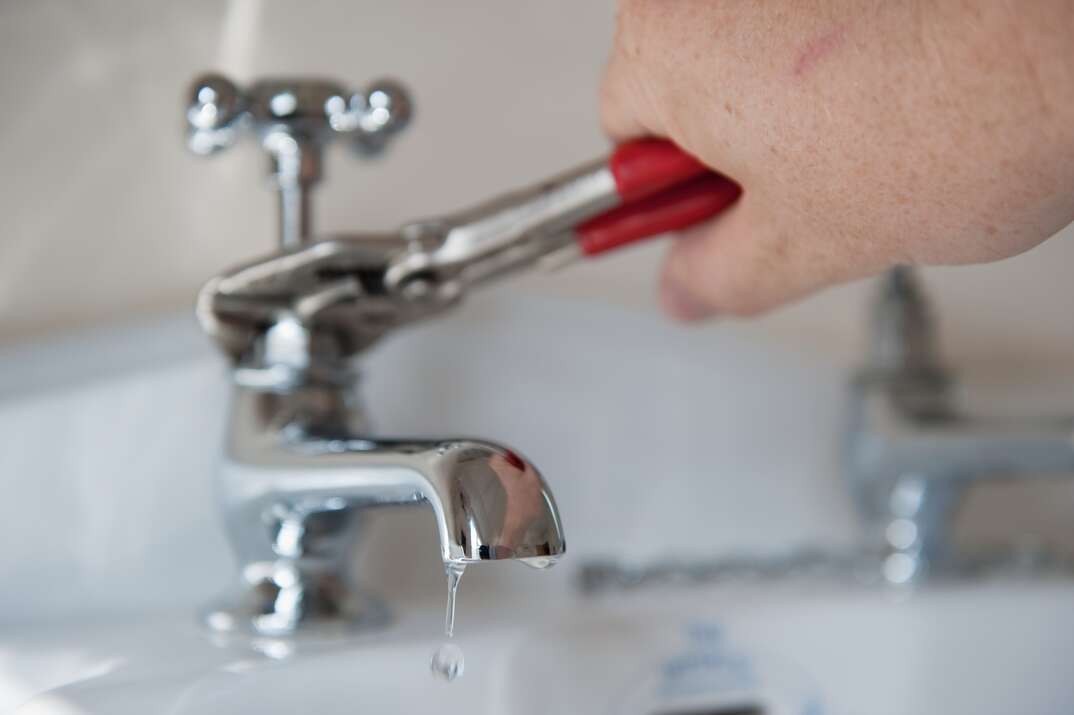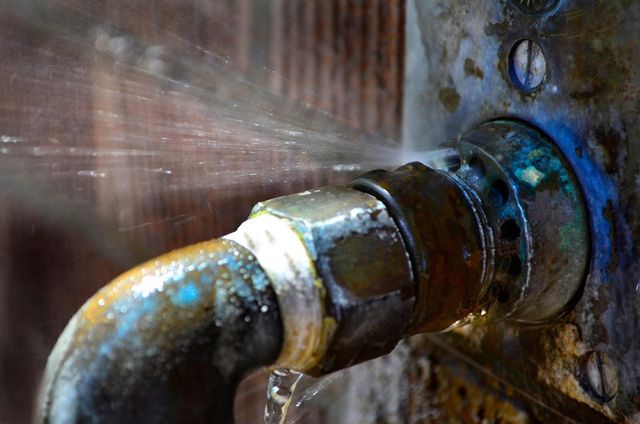Here below you will discover more professional facts with regards to Diagnose Unwanted Plumbing Noises.

To detect noisy plumbing, it is essential to identify first whether the undesirable sounds occur on the system's inlet side-in various other words, when water is transformed on-or on the drain side. Noises on the inlet side have actually differed causes: excessive water stress, used valve and tap components, incorrectly connected pumps or various other home appliances, improperly placed pipeline bolts, and plumbing runs containing way too many tight bends or other limitations. Noises on the drainpipe side normally stem from inadequate place or, as with some inlet side sound, a design including limited bends.
Hissing
Hissing sound that occurs when a tap is opened a little normally signals excessive water stress. Consult your regional water company if you believe this issue; it will have the ability to inform you the water pressure in your location as well as can set up a pressurereducing valve on the inbound water system pipe if necessary.
Various Other Inlet Side Noises
Creaking, squeaking, damaging, snapping, and tapping normally are triggered by the expansion or tightening of pipes, generally copper ones providing hot water. The sounds happen as the pipes slide versus loose fasteners or strike close-by house framework. You can commonly pinpoint the area of the issue if the pipes are subjected; just adhere to the noise when the pipelines are making noise. Most likely you will certainly discover a loosened pipe wall mount or an area where pipelines lie so near floor joists or various other framing items that they clatter against them. Affixing foam pipeline insulation around the pipes at the point of call must remedy the issue. Be sure bands and also hangers are safe and secure as well as give appropriate assistance. Where feasible, pipe bolts should be connected to massive architectural components such as foundation wall surfaces instead of to mounting; doing so decreases the transmission of vibrations from plumbing to surface areas that can enhance and move them. If affixing fasteners to framing is inevitable, cover pipelines with insulation or other resilient product where they speak to bolts, and sandwich the ends of brand-new bolts in between rubber washers when installing them.
Fixing plumbing runs that experience flow-restricting limited or numerous bends is a last option that ought to be carried out just after getting in touch with a competent plumbing specialist. Regrettably, this scenario is rather usual in older houses that may not have been built with indoor plumbing or that have seen a number of remodels, particularly by novices.
Babbling or Shrieking
Extreme chattering or shrilling that takes place when a shutoff or tap is activated, which generally goes away when the installation is opened totally, signals loosened or malfunctioning inner components. The remedy is to change the valve or faucet with a new one.
Pumps and appliances such as washing machines and dishwashers can move electric motor sound to pipelines if they are incorrectly linked. Link such products to plumbing with plastic or rubber hoses-never rigid pipe-to isolate them.
Drainpipe Noise
On the drainpipe side of plumbing, the principal objectives are to get rid of surfaces that can be struck by falling or rushing water and to shield pipelines to consist of inescapable noises.
In new building, bathtubs, shower stalls, toilets, and also wallmounted sinks and also containers ought to be set on or against resilient underlayments to lower the transmission of audio with them. Water-saving bathrooms and taps are much less noisy than conventional models; mount them rather than older types even if codes in your area still allow making use of older fixtures.
Drainpipes that do not run up and down to the cellar or that branch into horizontal pipeline runs supported at floor joists or various other mounting present particularly frustrating sound problems. Such pipelines are big enough to emit substantial vibration; they also lug considerable amounts of water, that makes the situation even worse. In new construction, specify cast-iron dirt pipes (the large pipelines that drain toilets) if you can manage them. Their massiveness consists of much of the sound made by water going through them. Also, stay clear of directing drains in walls shared with rooms and areas where people collect. Walls containing drains should be soundproofed as was defined earlier, making use of double panels of sound-insulating fiber board as well as wallboard. Pipelines themselves can be wrapped with unique fiberglass insulation produced the objective; such pipes have a resistant plastic skin (in some cases containing lead). Outcomes are not always acceptable.
Thudding
Thudding sound, typically accompanied by shuddering pipelines, when a faucet or device valve is switched off is a condition called water hammer. The sound and resonance are caused by the resounding wave of pressure in the water, which suddenly has no location to go. Sometimes opening up a valve that releases water quickly right into a section of piping having a restriction, joint, or tee fitting can create the same problem.
Water hammer can usually be treated by mounting fittings called air chambers or shock absorbers in the plumbing to which the trouble valves or taps are connected. These gadgets allow the shock wave produced by the halted circulation of water to dissipate in the air they have, which (unlike water) is compressible.
Older plumbing systems may have brief upright sections of capped pipeline behind walls on faucet competes the same function; these can eventually fill with water, minimizing or destroying their efficiency. The treatment is to drain pipes the water system totally by shutting down the main supply of water shutoff and opening all taps. Then open the primary supply shutoff and close the taps one at a time, starting with the faucet nearest the shutoff and also ending with the one farthest away.
WHY IS MY PLUMBING MAKING SO MUCH NOISE?
This noise indeed sounds like someone is banging a hammer against your pipes! It happens when a faucet is opened, allowed to run for a bit, then quickly shut — causing the rushing water to slam against the shut-off valve.
To remedy this, you’ll need to check and refill your air chamber. Air chambers are filled with — you guessed it — air and help absorb the shock of moving water (that comes to a sudden stop). Over time, these chambers can fill with water, making them less effective.
You’ll want to turn off your home’s water supply, then open ALL faucets (from the bathroom sink to outdoor hose bib) to drain your pipes. Then, turn the water back on and hopefully the noise stops! If you’re still hearing the sound, give us a call to examine further.
Whistles
Whistling sounds can be frustrating, as sometimes the source isn’t easily identified. However, if you can pinpoint which faucet or valve that may be the cause, you’ll likely encounter a worn gasket or washer — an easy fix if you replace the worn parts!Whistling sounds from elsewhere can mean a number of things — from high water pressure to mineral deposits. Your best plan of attack here is to give our plumbing experts a call. We’ll be able to determine where the noise is coming from and what the cause may be, then recommend an effective fix!
Cracks or Ticks
Cracking or ticking typically comes from hot water going through cold, copper pipes. This causes the copper to expand resulting in a cracking or ticking sound. Once the pipes stop expanding, the noise should stop as well.
Pro tip: you may want to lower the temperature of your water heater to see if that helps lessen the sound, or wrapping the pipe in insulation can also help muffle the noise.
Bangs
Bangs typically come from water pressure that’s too high. To test for high water pressure, get a pressure gauge and attach it to your faucet. Water pressure should be no higher than 80 psi (pounds per square inch) and also no lower than 40 psi. If you find a number greater than 80 psi, then you’ve found your problem!
Next step is to give us a call in order to install a pressure regulator. Trust us, you don’t want to wait to resolve this issue. Not only is the sound annoying, but high water pressure can be destructive to your home — including damaging certain appliances, like your washer and dishwasher.
Dripping
You might be accustom to the slow quiet drip your kitchen faucet makes. You might have even tuned out your bathroom sink dripping and drabbing all day long — but it’s time to find its cause.
A slow drip could signify a variety of easy to fix issues, such as a worn out O ring, or loose part. And by ignoring the drip, you could be wasting up to 2,000 gallons of water a year! So start conserving water — get it looked at ASAP.
https://www.pwessig.com/blog/2018/december/why-is-my-plumbing-making-so-much-noise-/

I'm certainly very involved in Why Do My Plumbing Pipes Make A Knocking Noise and I'm hoping you appreciated our page. Sharing is caring. One never knows, you will be doing someone a favor. Thanks a bunch for your time. Visit again soon.
Recurring Service Plans